The renovation project of a Victorian terraced house in Waltham Forest, North East London, serves as a model of how unlocking existing spaces can be a valuable and sustainable architectural solution, avoiding the need for extensions and the expansion of the original structure. The architects at THISS Studio eliminated the need for a carbon-intensive and costly extension by creatively reconfiguring and reimagining the existing floor area.
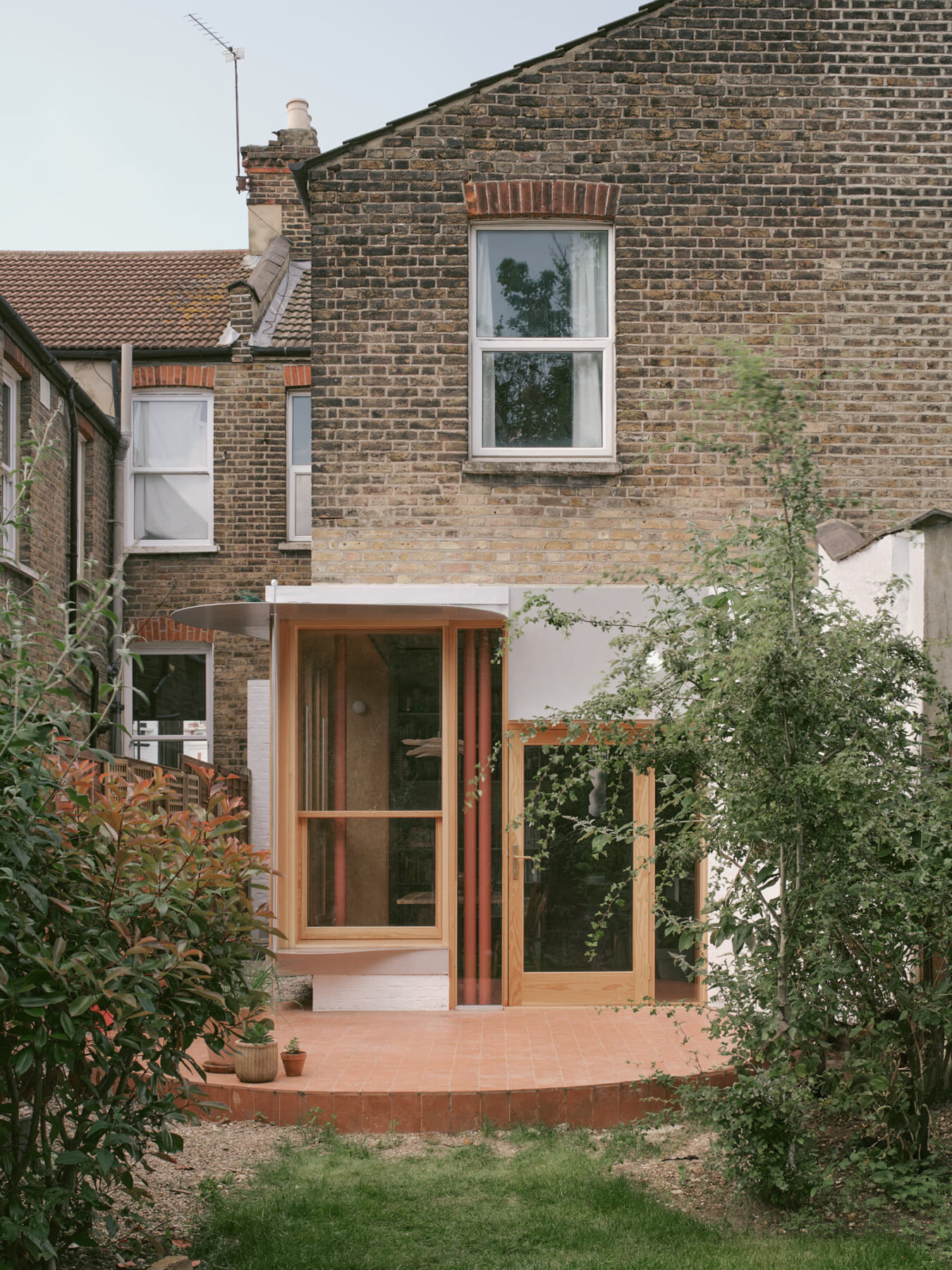
THISS Studio has transformed a Victorian terraced house in Waltham Forest, North East London, reviving the dark and cramped ground floor of the property into an airy and comfortable family space.

A creative reconfiguration of the existing floor plan has created a much-loved, carefully tailored home without the need for an extension, showing that sometimes unlocking the space already in our homes can be just as valuable as extending, with a fraction of the carbon.


Initially approached by the client to design a side return extension on the property, THISS Studio instead re-imagined the brief, honing in on the client’s essential needs: a large family kitchen, a strong connection to the garden, more space to work when the kids are at school, while creating something with a unique sculptural quality that is one-of-a-kind, playful and fun.



THISS Studio guided their clients to see the opportunities the existing floor area allowed; in leaning into the existing building to create more usable space, the architects avoided the need for a carbon intensive and costly extension.
THISS Studio’s forward thinking approach opened up space in the client’s budget for beautiful and interesting finishes and furnishings that echo the client’s personal style, and importantly, adding significant design value to the project.


THISS Studio’s solution involved opening up the back of the existing house and borrowing space from outside by installing a cantilevered dining bench framed by three oversized sash windows that flood the open plan kitchen with natural light.
As the centrepiece of the home, the new kitchen-diner radiates openness and authenticity, enhanced by a generous ceiling height overhead. Early on in the project, THISS Studio discovered a large void under the floor, as advocates for leaning into the building’s existing structure, the practice took advantage of the extra space, creating a level threshold to the garden and a stepped entrance into the kitchen. By removing the floor the architects were able to create an additional metre of ceiling height.



THISS Studio has skilfully layered natural tones of wood, terracotta, and pale cream acoustic wall panels made from recycled paper waste. A bespoke floor-to-ceiling mint green shelving unit accentuates the room’s sense of volume, and floral light fixtures are key moments of playfulness that echo the family’s bright personalities.


Connectivity between the interiors and garden has been kindly curated.
The terracotta tiled flooring flows out from the interior, forming the circular garden patio. Inside, a subtle tonal shift in the tiles completes the continuation of this circle, happily dubbed the ‘disco ball patio’.
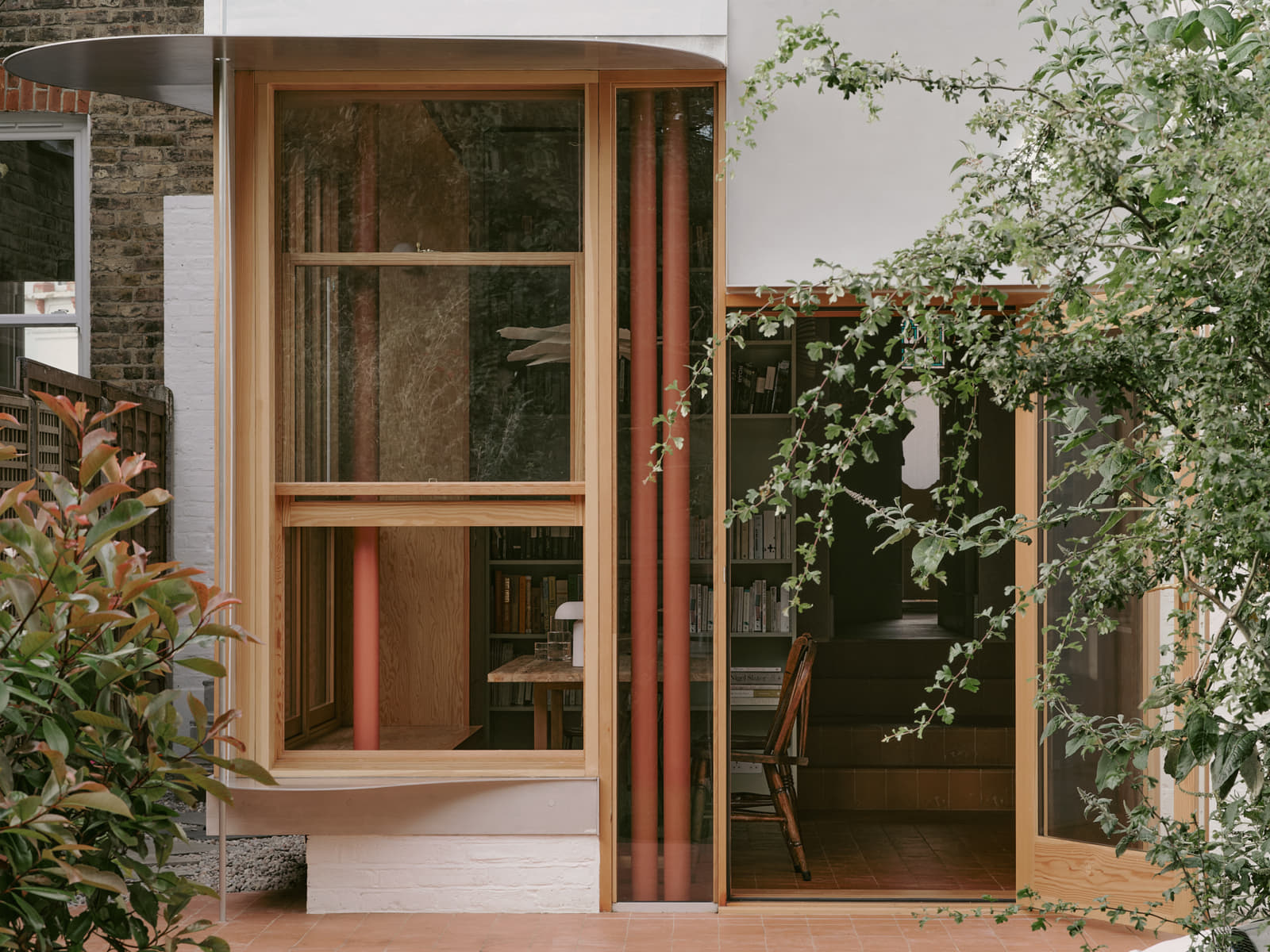
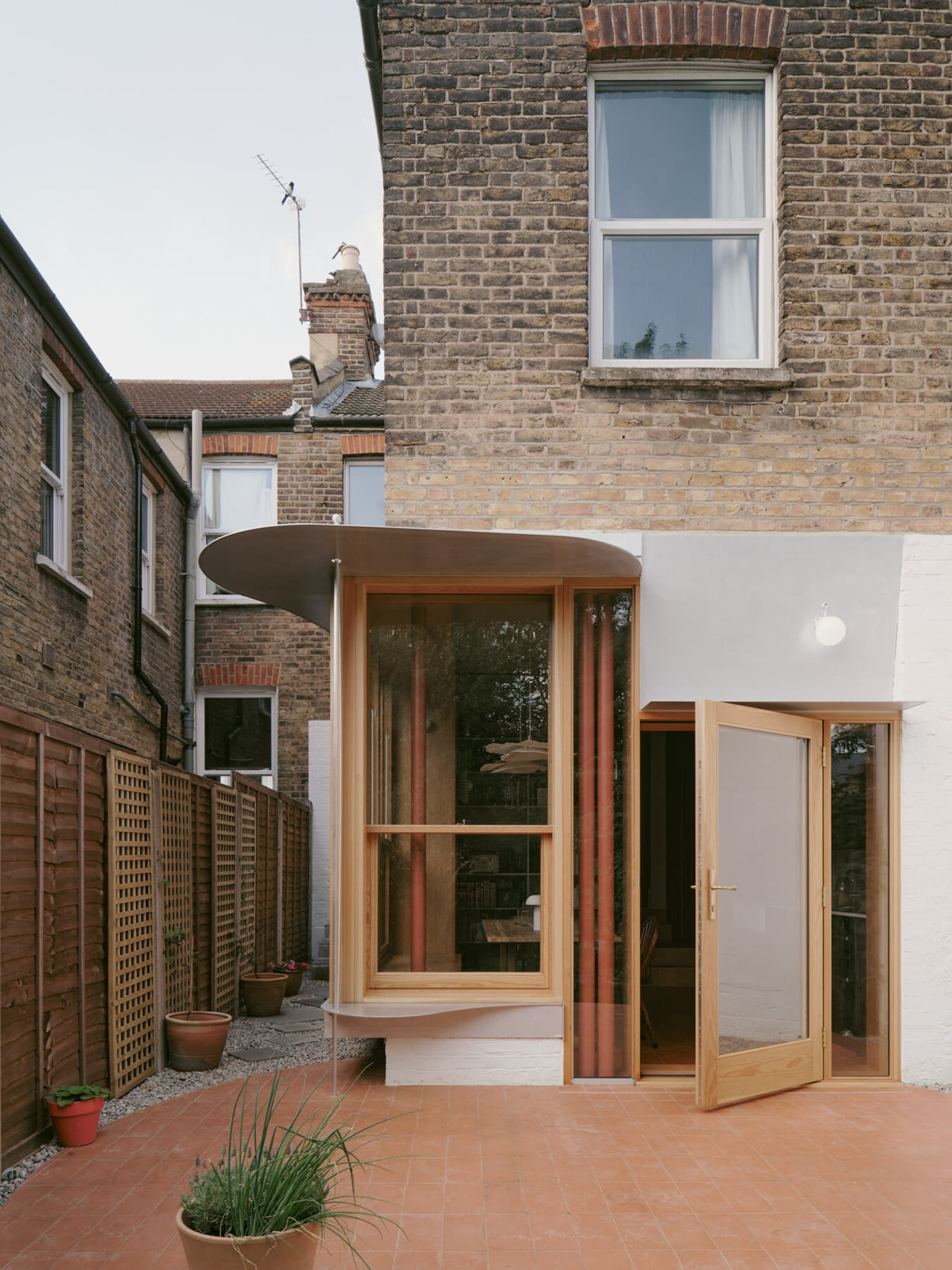
THISS Studio adopted a cost-effective solution to achieving a large area of glazing in the kitchen by using sash windows in timber frames, a more economical way to create large openable areas of glazing.
The rest of the ground floor also underwent renovations. The previous kitchen was located at the front of the home in what would have been a sitting room. The room has been restored back to its original condition, becoming a restful living/study space painted in butter yellow. A small WC and utility room was installed in the centre of the ground floor plan off the hallway. The interiors are bright, colourful and natural, and imbue a warm sense of character.

The project is a masterclass in how sustainability can be achieved on a budget when approached thoughtfully.
No concrete was used in the final design as all works were completed on the existing foundations of the property, resulting in a retrofit with an impressively small carbon footprint.

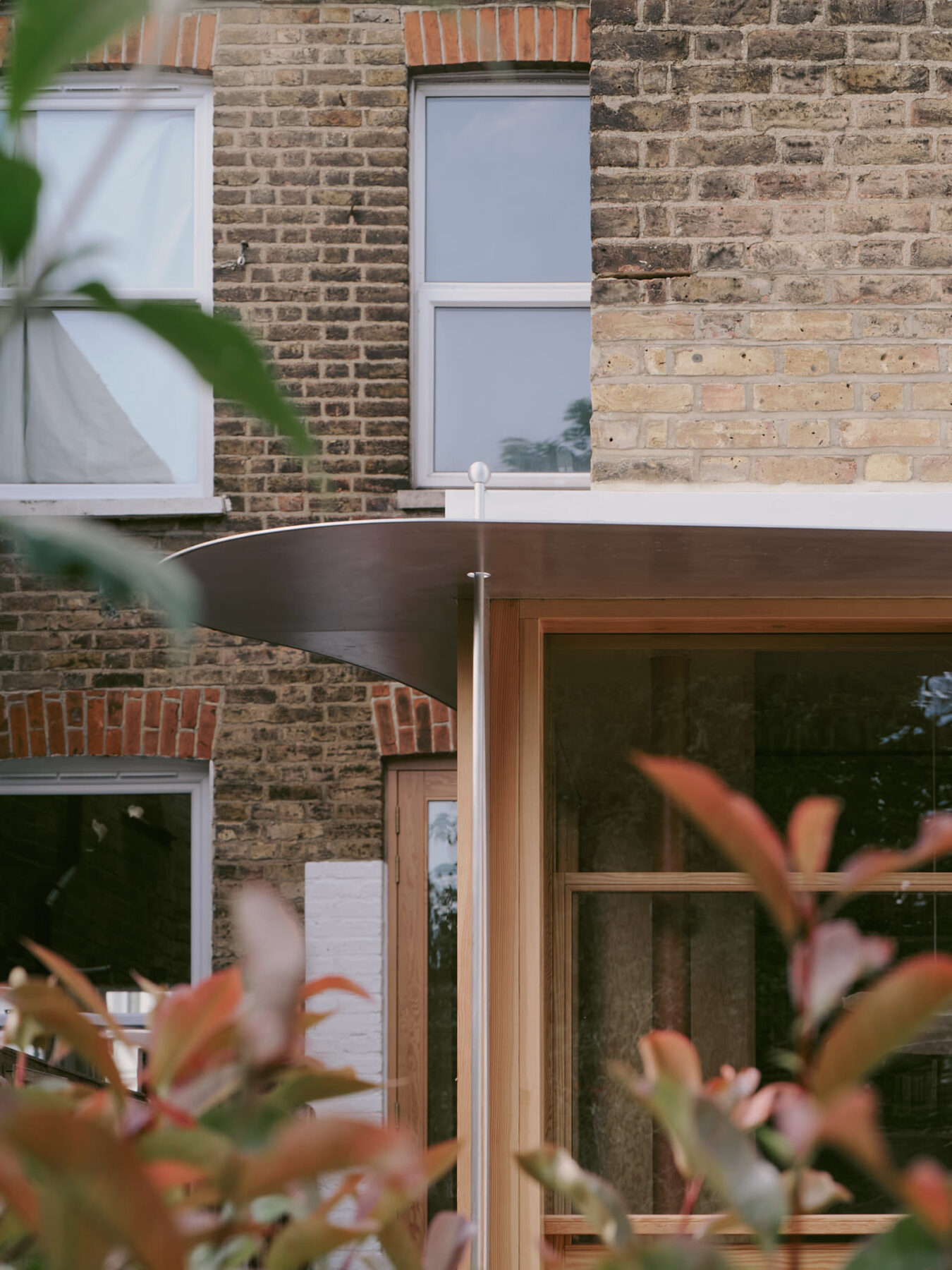
By making the property work harder for the client’s needs instead of wasting budget and carbon to create more space via a costly extension, THISS Studio has created a spacious, sophisticated and bright family home that is punctuated with personality and charm.

An exercise in unconventional composition and craftsmanship, the practice’s thoughtful use of space ensures that playfulness finds its place amongst inherent functionality.
Drawing
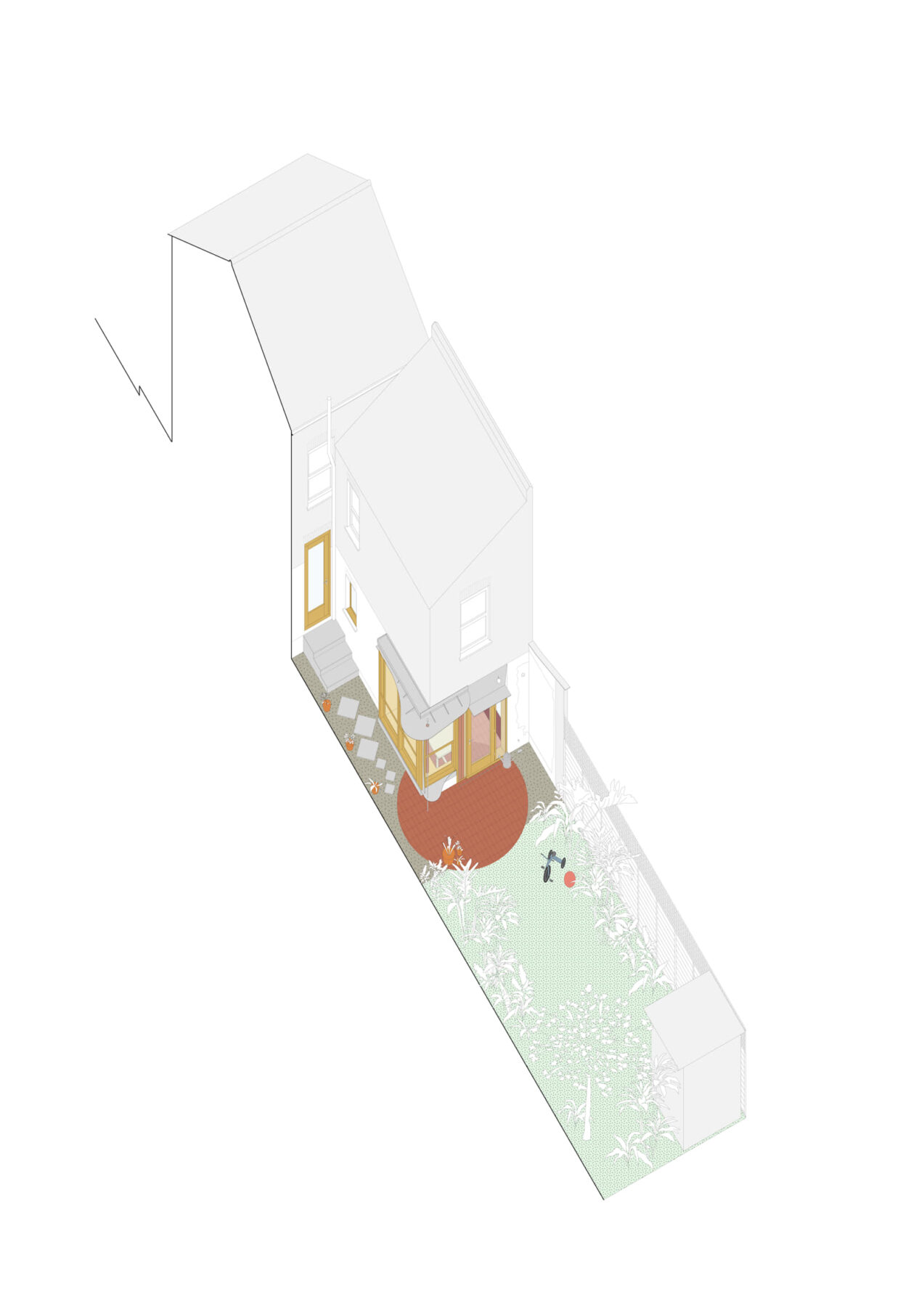
Axonometric
Facts & Credits
Title Hartley House
Typology Architecture, Residence, Renovation
Location Waltham Forest, London, United Kingdom
Surface 64 m2
Status Completed, 2024
Architecture & Interior Design THISS Studio
Structural Engineering Detail SD
Photography © Henry Woide
Text by the authors
Take a look at another project by THISS Studio: Common Knowledge’s office, coworking space, and recording studio here!
READ ALSO: House in an Olive Grove in Corfu | by Invisible Studio
